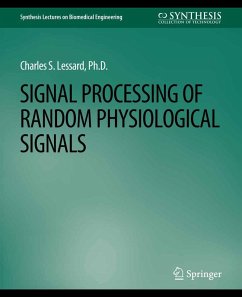This lecture book is intended to be an accessible and comprehensive introduction to random signal processing with an emphasis on the real-world applications of biosignals. Although the material has been written and developed primarily for advanced undergraduate biomedical engineering students it will also be of interest to engineers and interested biomedical professionals of any discipline seeking an introduction to the field. Within education, most biomedical engineering programs are aimed to provide the knowledge required of a graduate student while undergraduate programs are geared toward designing circuits and of evaluating only the cardiac signals. Very few programs teach the processes with which to evaluate brainwave, sleep, respiratory sounds, heart valve sounds, electromyograms, electro-oculograms, or random signals acquired from the body. The primary goal of this lecture book is to help the reader understand the time and frequency domain processes which may be used and to evaluate random physiological signals. A secondary goal is to learn the evaluation of actual mammalian data without spending most the time writing software programs. This publication utilizes "DADiSP", a digital signal processing software, from the DSP Development Corporation.
Dieser Download kann aus rechtlichen Gründen nur mit Rechnungsadresse in A, B, BG, CY, CZ, D, DK, EW, E, FIN, F, GR, HR, H, IRL, I, LT, L, LR, M, NL, PL, P, R, S, SLO, SK ausgeliefert werden.


